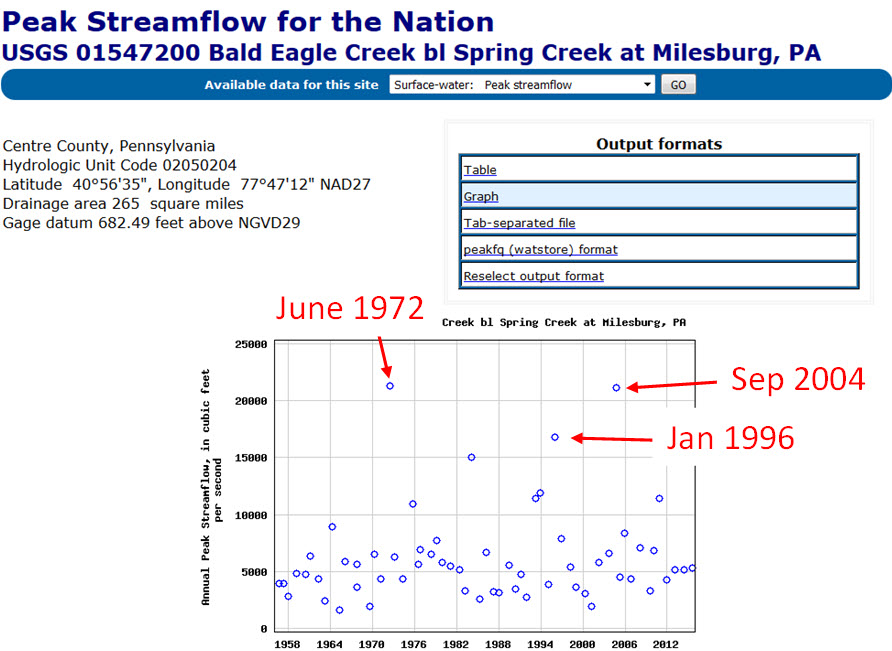This workshop provides an example for developing the Probable Maximum Flood (PMF) using an existing HEC-HMS model of the Sayers Dam watershed. The existing model was calibrated to three historic flood events. The original Spillway Design Flood (SDF) did not use the latest PMP guidance (e.g., HMR 51/52) and it is not clear how the flood hydrograph was computed. Consequently, use of the SDF does not allow the modeler to complete a sensitivity analysis of the hydrologic processes and assumptions associated with the reservoir Inflow Design Flood (IDF). Therefore, reuse of the SDF contained in the reservoir regulation manual is not appropriate. Instead of using the SDF, this workshop will present a way to use an existing HEC-HMS model and making modifications appropriate for the Probable Maximum Flood (PMF) simulation. The condition of the existing HEC-HMS model might not always be clear. It is important to review the model and understand any assumptions that might have been made when the model was developed (review over the hydrologic report). It is also important to look over the calibration results and see whether the computed simulation does a good job at replicating historic floods and assess whether additional adjustments or calibrations need to occur.
Tasks
- Review the existing HEC-HMS project and choose appropriate model parameters for the PMF simulation.
- Configure the model for a PMF simulation and simulate the PMF.
Background
The existing Bald Eagle Creek HEC-HMS model was calibrated to the largest historic flood events on record, as shown below.

In many cases, an existing model will not have been calibrated to the largest events on record, and adequate time for additional model calibration and validation is not available during the Periodic Assessment. However, guidance is provided for applying the existing precipitation-runoff model to simulate the PMF and includes information about setting infiltration/loss parameters, unit hydrograph parameters, and channel routing parameters. Conservative assumptions are appropriate during the Periodic Assessment given the high level of uncertainty regarding many of the components in the hydrologic analysis. If a dam was found to be hydrologically deficient during the Periodic Assessment, a more detailed study would follow where conservative assumptions are no longer necessary or required.
Three large runoff events were used to calibrate the model on occurring in June 1972 (Tropical Storm Agnes), another in January 1996 (rain-on-snow), and September 2004 (Tropical Storm Ivan). These events are among the largest to occur in the Bald Eagle Creek watershed. The most extreme flood event that has transpired since the construction of Sayers Dam occurred during the passage of Tropical Storm Agnes in June 1972. In mid-June, a multi-day period of extremely heavy, long duration rainfall led to record peak discharge rates and reservoir stages (since the implementation of wide-scale streamflow gaging stations). The Tropical Storm Agnes event still remains the largest event of record in terms of peak discharge rates and reservoir stages throughout the majority of the Susquehanna River watershed. Within the West Branch Susquehanna watershed, three-day precipitation accumulations exceeded 10 inches in various locations with the majority of the watershed exceeding seven inches in that same time period.
When reviewing the historic storms used to calibrate and validate the model, note the quality of the model calibration and the magnitude of the storm events. Documenting that the storm events used to calibrate and validate the model were among the largest on record, or were relatively average flood events, will help with decisions about whether the model should be calibrated and validated to additional storms in any future analysis.
Continue to Review the Existing HEC-HMS Project.